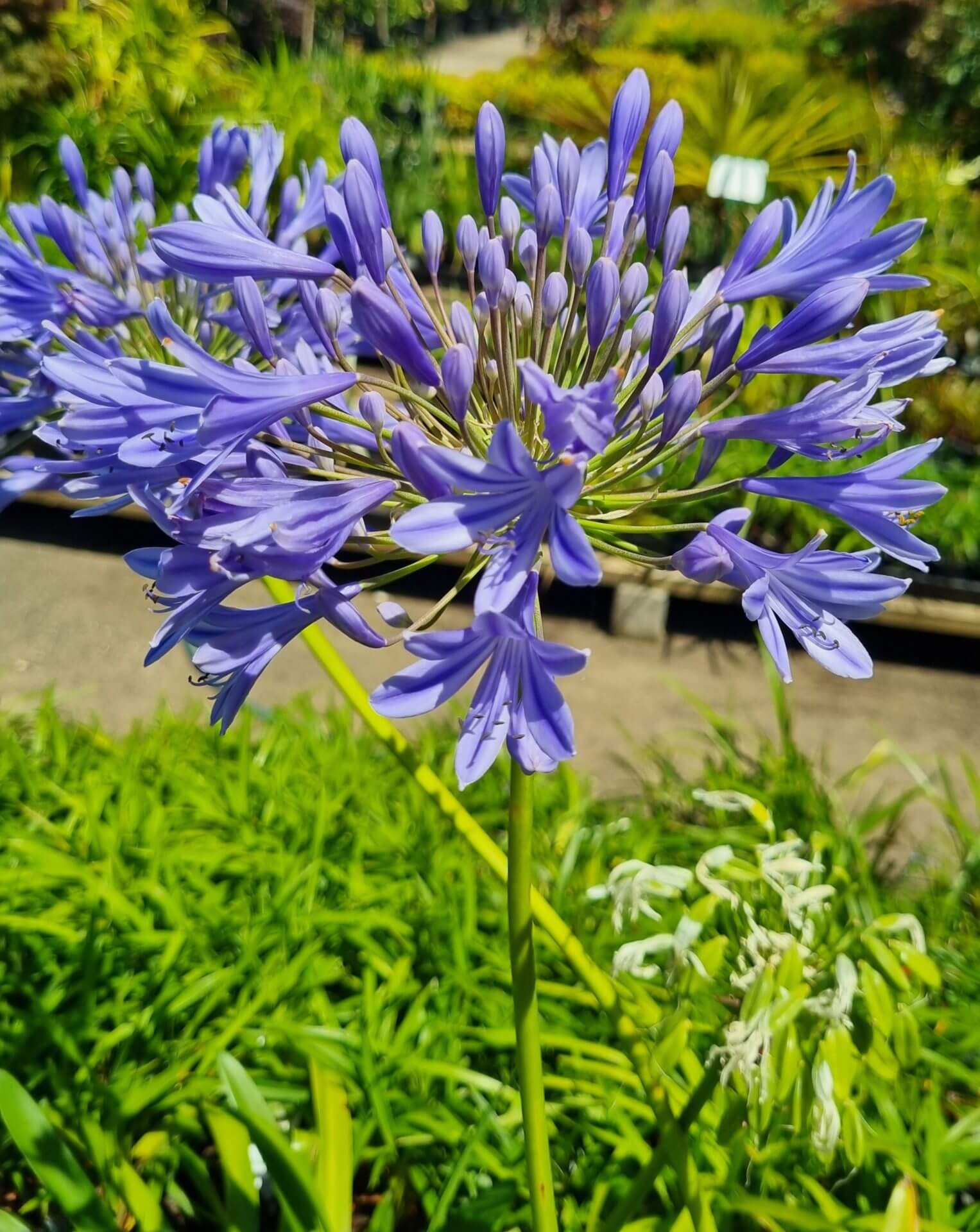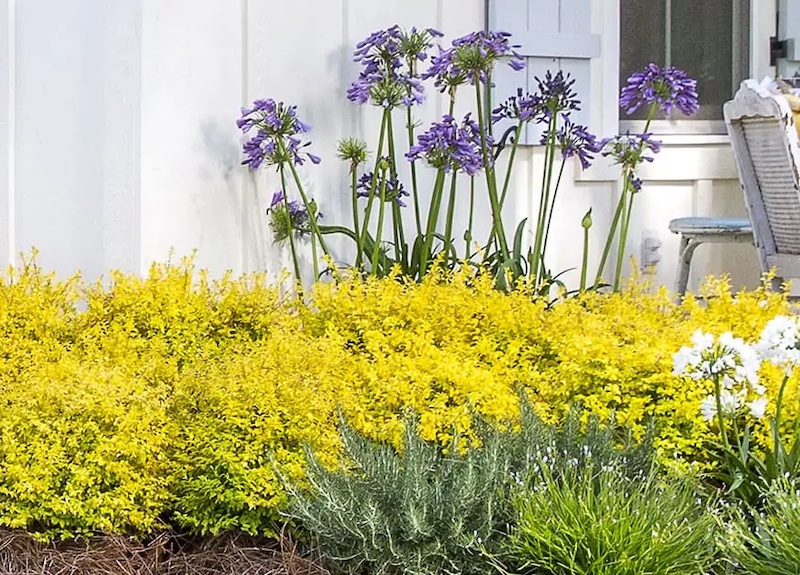Expanding Agapanthus: A Complete Guide to Beautiful Blooms
Expanding Agapanthus: A Complete Guide to Beautiful Blooms
Blog Article
Understanding the Art of Agapanthus Treatment: Important Actions for Healthy Development and Vivid Blooms
In the world of gardening, the farming of agapanthus stands as a satisfying endeavor for those that seek to nurture these classy blooming plants. From choosing the best variety to understanding trimming methods, the trip towards growing growing agapanthus plants is diverse and holds the vital to opening the full possibility of these herb gems.

Picking the Right Agapanthus Variety

When selecting the appropriate Agapanthus selection for your garden, consider variables such as environment viability, bloom color, and development routine. Furthermore, consider the environment in your region to ensure the Agapanthus selection you select can prosper in your specific problems. Comprehending the growth routine of various Agapanthus ranges is crucial for correct positioning within your garden.
Ideal Planting Problems
Considering the optimum ecological needs is necessary for successful Agapanthus growing. Agapanthus grows in well-draining dirt with a somewhat acidic to neutral pH degree. When planting, choose a place that obtains full sunshine to partial shade. In hotter environments, giving some mid-day color can avoid scorching of the fallen leaves. Agapanthus plants are sensitive to cold temperatures and should be shielded from frost throughout cold weather.
To make sure healthy development and vibrant blooms, plant Agapanthus bulbs at a depth of regarding 2-4 inches and room them 8-12 inches apart. Mulching around the base of the plants assists preserve dampness and subdues weed growth.
Watering and Feeding Tips
Preserving appropriate dampness degrees and supplying vital nutrients are crucial elements in the care program for Agapanthus plants. It is crucial to strike a balance when it comes to sprinkling Agapanthus. These plants choose continually moist dirt but are susceptible to root rot if overwatered. During the growing season, water deeply as soon as a week, making certain the dirt is well-draining to avoid waterlogging. In hotter environments or throughout periods of drought, even more constant watering might be necessary to keep the dirt evenly moist. Nevertheless, minimize watering in the winter season to stop waterlogged problems.
Fertilizing Agapanthus is necessary for promoting healthy and balanced growth and prolific flowers. Apply a well balanced plant food, such as a 10-10-10 formula, in the very early spring as brand-new growth arises. By complying with these watering and feeding pointers, you can guarantee your Agapanthus plants flourish and create lively, lasting blooms.
Trimming Strategies for Agapanthus
Trimming Agapanthus plants at the proper times and with appropriate techniques is vital for maintaining their health and wellness and advertising ideal development and blooming. The suitable time to prune Agapanthus is in late wintertime or very early spring prior to brand-new development arises. Start by removing any yellowing or dead leaves near the base of the plant. Cut them as close to the ground as possible without harming the emerging shoots.
For flowered stems, wait up until the blooms have perished and after that trim them back to the base. This not just cleans up the plant's appearance but likewise encourages the visit the site development of brand-new flower buds. Deadheading spent blossoms can additionally redirect the plant's power right into producing more blossoms as opposed to establishing seeds. Nonetheless, if you want to accumulate seeds for propagation, leave some blossoms to completely dry and mature on the plant.
Bear in mind to use tidy, sharp tools to make precise cuts and lower the risk of presenting conditions. Agapanthus. Routine pruning will aid maintain your Agapanthus looking cool and healthy while making sure a plentiful screen of stunning blossoms
Managing Usual Parasites and Illness
After making certain correct trimming methods for Agapanthus, it is vital to deal with typical bugs and diseases that can impact the health and vitality of these plants. Agapanthus plants are usually durable but can still drop sufferer to specific issues. One common parasite that affects Agapanthus is the Agapanthus gall midge. This little, orange fly lays its eggs in the vegetation, causing altered growth and flower buds that fall short to open. To fight this pest, prune and damage any kind of damaged plant parts and consider making use of insecticidal soap.
An additional usual concern is fungal leaf spot, which offers as dark sores on the leaves. To stop fungal diseases, make sure good air circulation around the plants, stay clear of overhanging watering, and get rid of any type of contaminated leaves quickly. In addition, Agapanthus plants can endure from origin rot if they are planted in poorly draining dirt. To stop this, plant Agapanthus in well-draining dirt and stay clear of overwatering. By being attentive and taking prompt activity against pests and illness, you can assist your Agapanthus plants grow and generate vivid flowers.

Final Thought
Finally, grasping the art of agapanthus treatment entails selecting the ideal variety, supplying suitable growing conditions, correct watering and feeding, proper pruning methods, and addressing usual parasites and illness. By adhering to navigate to this website these crucial actions, you can guarantee healthy and balanced development and dynamic flowers for your agapanthus plants. Keep in mind to on a regular basis monitor and maintain your plants to promote their general well-being and longevity.
To guarantee healthy development and vivid blossoms, plant Agapanthus light bulbs at a deepness of concerning 2-4 inches and room them 8-12 inches apart. By following these watering and feeding tips, you can guarantee your Agapanthus plants prosper and create dynamic, lasting blossoms.
One common insect that impacts Agapanthus Going Here is the Agapanthus gall midget. Additionally, Agapanthus plants can experience from origin rot if they are planted in inadequately draining dirt. By complying with these crucial steps, you can make sure healthy growth and vibrant flowers for your agapanthus plants.
Report this page